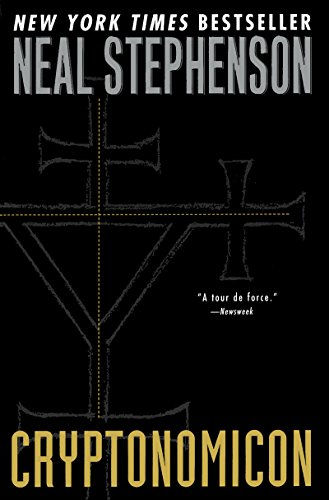
The editorial annotation reads: “Crypt. The "real" capital of the Web. A hacker's paradise. The nightmare of corporations and banks. Enemy number one of all world governments. There are no countries or nationalities online. There are only free people who are ready to fight for their freedom! " And, as is often the case, especially with AST, it corresponds to the content of the book at most by a fraction of a percent.
"It's an engrossing look at the way the flow of information shapes history--as well as a rare glimpse into the soul of the hardcore geek." - Lev Grossman, Entertainment Weekly
There are four storylines in the novel, of which only one concerns this Crypta - in the nineties of the twentieth century, several enterprising young businessmen are really trying to create such a virtual space where one can safely store and exchange information without fear of espionage and the like. But the key word here is "trying", and no one knows whether their efforts will be crowned with success or not. The action of the other three lines takes place half a century earlier, during the Second World War, and their heroes are the ancestors of some of the characters in the first plot. Thus, the book is divided into two parts unequal in volume: the first is a modern economic thriller, the second is a completely traditional military adventure novel, and it seems at first that these two parts are not united by anything other than the family ties of some heroes. Over time, of course, it becomes clear that this is not entirely true, and the described events of the middle of the century cannot but have some influence on what happens at its end. As a result, the book is finally perceived as a whole, even though its parts are connected rather indirectly, but, be that as it may, what happens to its characters is not the most important thing. The main distinguishing feature of the novel is different.
"Cryptonomicon" is a real anthem, or even, given its volume, a symphony dedicated to the various wonders of cryptography. Many and many pages of the book are devoted to the general and detailed principles of encryption and breaking ciphers, containing many calculations, schemes, and even just seemingly meaningless rows of numbers and letters. Few would dare to insert such a volume of very specific information into a work of art. And only a few could convey this information in such a way that it all reads no worse than any well-written action scenes. And it's nice that Stevenson turned out to be one of those units. Of course, all this was entered into the book for a reason, the work of encryptors and decryptors is closely related to the plot of both parts of it. It is clear that in modern business a lot depends on hiding one's own secrets and on discovering the secrets of a competitor. And the importance of obtaining enemy information in a war cannot be exaggerated at all. But just getting this information is not enough, you also need to get the most out of it. Well, let's say - the British ransomware broke the German code, got the opportunity to listen to enemy talks, and began to sink their submarines one after another. It is clear that the enemy will immediately be on his guard and change all the codes first of all. Of course, some benefit has been received, but you can probably achieve more? Or here's the problem - having opened the enemy code, we found that the enemies had managed to open ours a little earlier, but they use the information received intelligently and carefully. Your codes, of course, need to be changed, but if this is done suddenly and for no apparent reason, it will also alert the enemy, to put it mildly. In general, this confusing business is cryptography ...
But there is almost no fiction in the book. It is far from immediately possible to discern at least some fantastic elements through the thickness of the underlined realism, such as, for example, the Inner and Outer Yglm islands in the British archipelago, whose inhabitants speak a language from only consonants, or, for example, such a strange character as Enoch Root ... So the book can be ranked as fiction, although this is not so important, in truth.
Bottom line: a very impressive piece, although in places it still seems overly drawn out. However, surprising as it may seem, this protractedness is mostly manifested not at all in those episodes that are devoted to detailed descriptions of the work of ransomware. To tell the truth, I doubt that I will want to re-read "Cryptonomicon" again, but I do not regret the time spent on it, on the contrary.
You can get «Cryptonomicon» at Amazon.
This article was sponsored by Nicole Shoener.
Comments